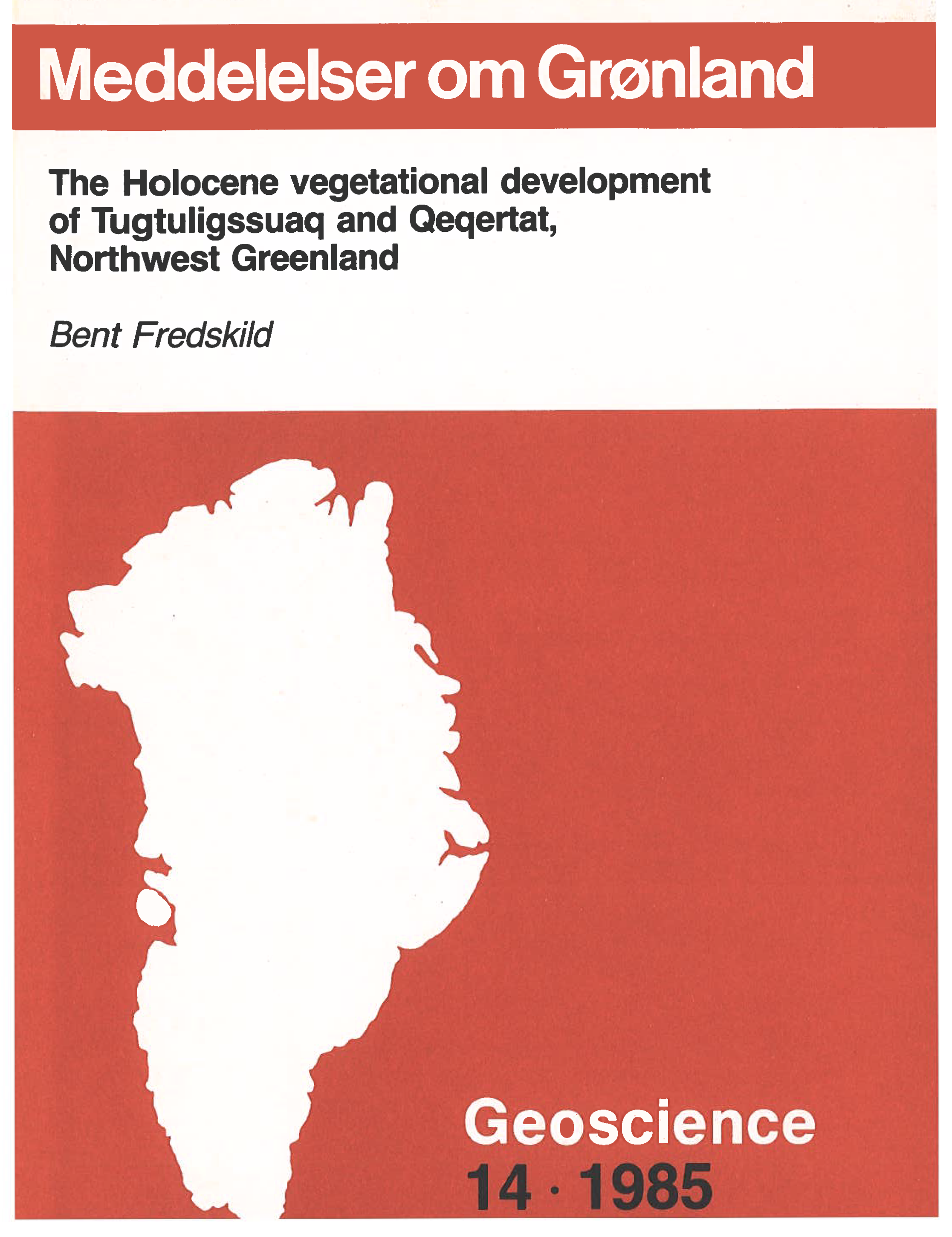The Holocene vegetational development of Tugtuligssuaq and Qeqertat, Northwest Greenland
DOI:
https://doi.org/10.7146/moggeosci.v14i.139675Abstract
Holocene pollen- and macrofossil diagrams from three high arctic lakes in Northwest Greenland are presented, and based on these the radiocarbon dated palaeovegetation zones (PY zones) are described. Two of the lakes are situated above the upper marine limit on the peninsula Tugtuligssuaq in Melville Bugt, in a highly maritime climate. The vegetation, invading the deglaciated soil around 8500 B.P., was a speciesrich pioneer vegetation , dominated by Poaceae, Oxyria digyna and other herbs, including some species not growing on the peninsula today. The first dwarf-shrubs, Empetrum hermaphroditum and Vaccinium uliginosum, immigrated in the coming centuries, followed by Cassiope tetragona. By 6700 B.P. Salix arctica and S. herbacea immigrated. These species together with Cyperaceae, later on Cassiope, dominate the pollen spectra until c. 2300 B.P. The influx of long-distance pollen, indicating more frequent south-westerly winds, increased around 5000 B.P. and remained at a high level until a marked decrease is seen c. 2300 B.P. Since then the influx was very low. Cassiope dominates in the recent PV zone. The lakes were fairly rich in the first millennia with high production of Pediastrum and Botryococcus. Colymbetes dolabratus and Gasterosteus aculeatus, both north of their present distribution limit , lived in the lakes at an early stage.
Qeqertat at the head of Inglefield Bredning has a more continental climate. The cored lake was not isolated from the sea until 6800 B.P., just prior to the immigration of Salix arctica. Cyperaceae dominate the pollen diagram until around 3500 B.P. when Cassiope and especially Salix arctica become more frequent. At the same time marked changes in the microflora in the lake indicate increased frost boil activity around the lake as a result of a climatic change. Open soil plants are more frequent in the present PY zone.
Pollen influx is low in these high arctic lakes, viz. c. 6 in the recent PY zone in Langesø and c. 1 in the Qeqertat lake. Melt water washes down pollen and other plant material from the surrounding slopes into Rundesø, thus causing too high influx values.

Downloads
Published
How to Cite
Issue
Section
License
Coypyright by the authors and the Commision for Scientific Research in Greenland / Danish Polar Center. No parts of the publications may be reproduced in any form without the written permission by the copyright owners.

